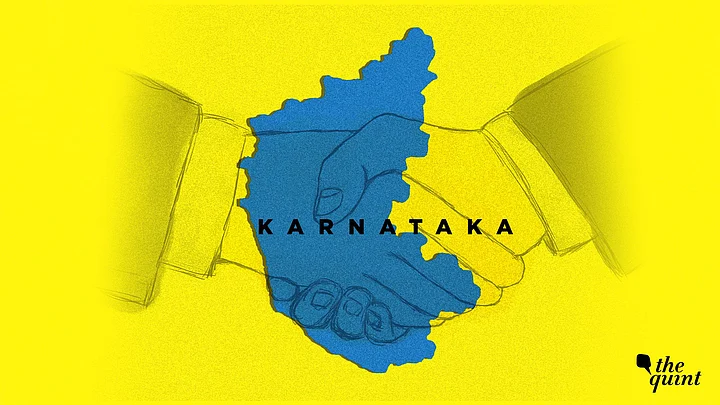Just when it seemed as if the BJP’s ‘Operation Lotus’ in Karnataka was losing steam, four Congress MLAs missed the party meet on Friday, 18 January. This was despite a whip being issued and the threat of facing action under the anti-defection law. Meanwhile, the Congress took its legislators to a private resort on the outskirts of Bengaluru to thwart any attempts by the BJP to poach its leaders.
Former Karnataka Chief Minister and BJP leader BS Yeddyurappa claimed that his party’s legislators who were holed up in Gurugram will return to Karnataka and claimed that he has no intention of destabilising the coalition government.
However, the threat to the alliance still looms large, considering Karnataka’s tryst with rocky coalition governments in the past. From Ramakrishna Hegde in 1983 to Kumaraswamy in 2006, no coalition government in Karnataka has completed its full term. With the current Congress-JD(S) ship taking a similar course, look at how the previous coalitions crumbled.
The government was formed by Janata Party, Kranti Ranga along with support from the outside by BJP, CPI and CPM. Poll pundits, however, call it a minority government, instead of a coalition.
Cracks showed up in the alliance as Hegde was weighed down by BJP’s pressure to run the government. However, the alliance collapsed when Hegde took moral responsibility for the defeat in the 1984 parliamentary elections after Indira Gandhi’s assassination and sought a fresh mandate in 1985.
This is the first full-fledged coalition government of Congress and JD(S) with the Congress’ Dharam Singh as the Chief Minister and Siddaramaiah, who was then with the JD(S), as the deputy Chief Minister.
The failure of this coalition can be attributed to multiple factors. Congress’s attempt to poach Siddaramiah, the two parties’ inability to fight local body elections together, and rumours that the Congress was planning to go in for a midterm election. Another reason was HD Deve Gowda and his son HD Kumaraswamy’s dissatisfaction with Siddaramaiah, whose increasing influence was a threat to them. Kumaraswamy fuelled the dispute by taking his MLAs to the BJP, thus bringing down the government.
According to the power-sharing plan, Kumaraswamy completed his tenure as the Chief Minister for the first 20 months. However, Kumaraswamy made way for Yeddyurappa to take his seat, rather reluctantly, and withdrew the support within seven days.
The Yeddyurappa-led coalition fell within seven days in late 2007, making him the shortest serving Chief Minister of Karnataka.
Karnataka voters gave a fractured mandate, which resulted in multiple twists and turns to form the government. While BJP emerged as the single largest party, Yeddyurappa was the chief minister for less than 56 hours, as he could not muster the numbers.
Congress and JD(S) made a post-poll alliance, safeguarded their MLAs from possible horse-trading and eventually formed the government. As signs of bickering and allegations of horse-trading resurface in yet another coalition, only time will tell whether the JD(S)-Congress alliance emerges victorious or that history repeats itself.
(At The Quint, we question everything. Play an active role in shaping our journalism by becoming a member today.)
